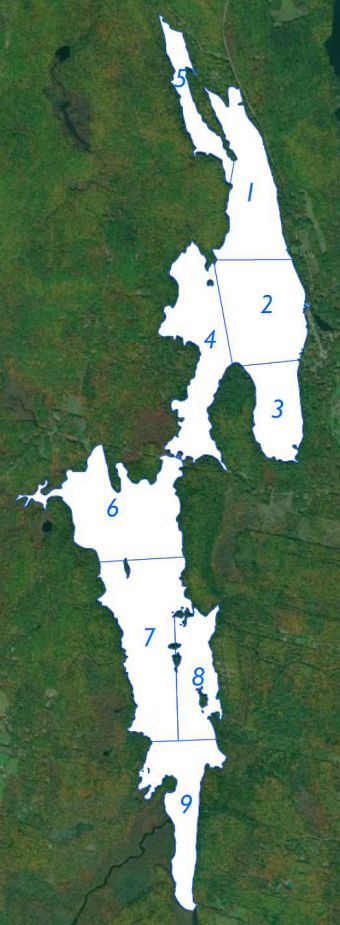
Counting Loons

The third Saturday in July is the annual loon count in Maine, coordinated by Maine Audubon. This year’s count took place July 19 and was the 42nd annual count in this important ongoing citizen-science project dedicated to better understanding one of Maine’s most iconic birds.
Every year over 1000 volunteers, of which I am one, attempt to count all the loons on over 300 Maine lakes at the same time. The count is organized like a military operation, and I am the coordinator for the dozen or so volunteers on Long Pond, which is divided into nine survey areas, with a tenth on Ingham Pond. Scott Chapman is my deputy coordinator for Lower Long Pond. Scott is a second-generation counter. His late mother counted loons every year for decades, usually with young Scott in the boat.

Early in the morning, all counters head for their assigned section of the lake to be in position to count all the adult loons and loon chicks in their area between 7:00 and 7:30 a.m. This year’s weather was perfect for counting loons: clear and sunny with light winds. This year I had two assistants, Fred Knight and my grandson Bayard (“Bub”). Bub and I picked Fred up at this dock on the way to our survey area. There was a great blue heron on Fred’s swim float when we arrived.
Our assigned area was a cove that has been used for many years by a pair of loons that used to nest on a secluded beach on a small peninsula and often lost their eggs to land-based and avian predators who found the nest and ate the loon eggs before they hatched. Six years ago, the Belgrade Lakes Association, as part of their ongoing study of loons on Great and Long Pond — for more information, see Dick Greenan’s Call of the Loon articles — built and installed a floating raft nest with an avian guard to prevent predation by eagles, ravens, and blue herons. The nest was moored about 15 feet offshore from the usual nesting site to provide the loons some protection from terrestrial predators such as racoons, minks, et al. When land-based predators have to cross water to reach the nest, the defensive advantage shifts strongly in the loons favor! For four of the past five years, the loons have successfully used this nest. Two chicks were born near the end of June but, but only one has survived.
As we entered our area, a loon flew out of it, probably one of the parents heading off to feed. We heard another loon calling along the eastern shore but did not find it at first. As we were leaving our area, we searched that area again and found one parent with the chick. As of press time, I had not received results from all of my counters, but it appears likely that chick numbers are up slightly from last year in Long Pond.
Take advantage of the rest of the summer and get out on the lakes or hike or bike in the hills. And take a kid along. Or a parent or grandparent. You will be creating memories that will last. 7 Lakes Alliance is hosting many interesting events, including Thursday afternoon, 3:00 – 4:00, presentations by Chewonki. More info is available at the 7 Lakes website. Pick up the latest map of the local trails from the 7 Lakes Alliance at 137 Main Street in Belgrade Lakes. Individual trail maps for most of the trails can be downloaded from their website.
Download Full Newspaper: High Res | Low Res (Details…)
<— Previous Article • Summaries • Next Article —>
©2025 by Summertime in the Belgrades. All rights reserved.